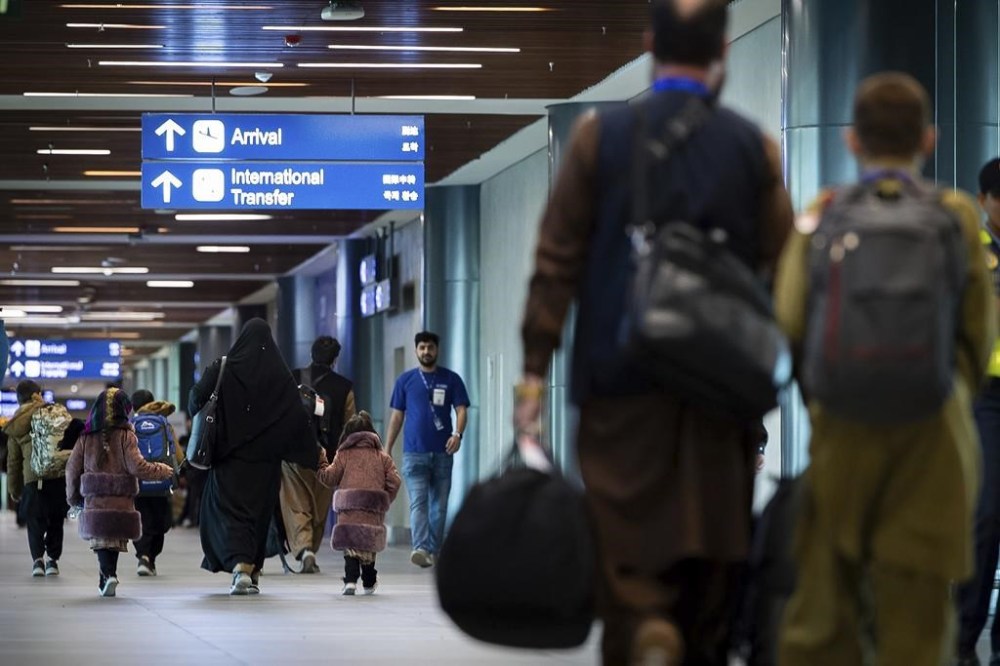Scores of Afghans have left for the US after their visas were processed in the Philippines
Advertisement
Read this article for free:
or
Already have an account? Log in here »
To continue reading, please subscribe:
Monthly Digital Subscription
$0 for the first 4 weeks*
- Enjoy unlimited reading on winnipegfreepress.com
- Read the E-Edition, our digital replica newspaper
- Access News Break, our award-winning app
- Play interactive puzzles
*No charge for 4 weeks then price increases to the regular rate of $19.00 plus GST every four weeks. Offer available to new and qualified returning subscribers only. Cancel any time.
Monthly Digital Subscription
$4.75/week*
- Enjoy unlimited reading on winnipegfreepress.com
- Read the E-Edition, our digital replica newspaper
- Access News Break, our award-winning app
- Play interactive puzzles
*Billed as $19 plus GST every four weeks. Cancel any time.
To continue reading, please subscribe:
Add Free Press access to your Brandon Sun subscription for only an additional
$1 for the first 4 weeks*
*Your next subscription payment will increase by $1.00 and you will be charged $16.99 plus GST for four weeks. After four weeks, your payment will increase to $23.99 plus GST every four weeks.
Read unlimited articles for free today:
or
Already have an account? Log in here »
Hey there, time traveller!
This article was published 18/01/2025 (330 days ago), so information in it may no longer be current.
MANILA, Philippines (AP) — Nearly 200 Afghan nationals have been flown on to the United States after their special immigration visas were processed in the Philippines as part of an agreement between Manila and Washington, the U.S. Embassy in Manila said Sunday.
The Afghans left the Philippines in several groups on commercial flights last week after completing their application process for resettlement in the U.S., according to the embassy spokesperson Kanishka Gangopadhyay.
An embassy statement expressed “deep appreciation to the government of the Philippines for their cooperation and support for U.S. efforts to assist Afghan special immigrants.”

The Afghans, including many children, arrived in the Philippines on Jan. 6. Details of their numbers and location were kept secret by U.S. and Philippine officials. Washington covered the cost of their stay in the Philippines.
The Afghans primarily worked for the U.S. government in Afghanistan or were deemed eligible for U.S. special immigrant visas but were left behind when U.S. and NATO forces withdrew from Afghanistan after 20 years of war in August 2021 as the Taliban seized power.
At the time, the Taliban takeover exposed Afghan supporters of U.S. forces to potential retaliatory attacks by Afghanistan’s new rulers.
Outgoing President Joe Biden and President-elect Donald Trump have blamed one another for the chaotic pullout of U.S. forces.
Biden discussed the Afghan resettlement issue with Philippines leader Ferdinand Marcos Jr. when he visited the U.S. last year, Philippine officials said. In July, the Philippines agreed to temporarily host a U.S. immigrant visa processing center for the Afghan nationals although there were concerns over security due to threats faced by some of the Afghans trying to flee from the Taliban rule.
A senior Philippine official said last year that the accommodation in the Philippines was a one-time deal.
Marcos has rekindled relations with the U.S. since his 2022 election victory and has allowed an expansion of the American military presence under a 2014 defense agreement in a decision that has alarmed China.
The Marcos administration has also broadened military and defense ties with the U.S., Japan and Australia and moved to build stronger security relations with France, New Zealand and Canada to strengthen its territorial defense, including in the disputed South China Sea.
That has dovetailed with the Biden administration efforts to boost an arc of security alliances in the Indo-Pacific to better address concerns over China’s increasingly aggressive actions, including in the South China Sea, the East China Sea and in the Taiwan Strait, that have raised tensions to their highest level in decades.

